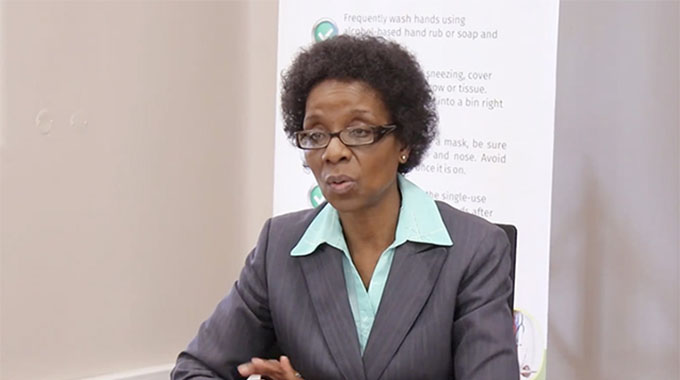How waste water is helping South Africa fight COVID-19-

- Detecting the coronavirus in samples from treatment plants could give early warning of outbreaks and new variants.
Heather Richardson
Monday is sample-collection day in Cape Town, South Africa, and Aqeelah Benjamin is halfway through her shift. At the Green Point wastewater-treatment plant, under the Atlantic coast promenade, she fills a 500-millilitre bottle from a tap of untreated water. She wipes the bottle’s exterior, cleans it with a spritz of ethanol and stores it on ice.
It’s one of nine samples that Benjamin will collect today, each from a different facility. Later, she’ll drop them off at the South African Medical Research Council (SAMRC) laboratory, where they will be tested for the presence of SARS‑CoV-2, the virus that causes COVID‑19. But that’s just a fraction of the samples’ potential — waste water contains a wealth of information about public health, and scientists are only just starting to tap into its potential.
Wastewater testing can provide an unbiased snapshot of community health: whatever access they have to the health-care system, everyone has to go to the toilet. And as the effluent makes its way to treatment facilities, researchers can test it to determine what pathogens might be present. For more than 40 years, researchers have used waste water to monitor the spread of poliovirus. Norovirus, influenza, hepatitis and measles viruses can also be found in waste water. Now, a growing number of countries are using waste water to monitor the spread of COVID-19. The memorably named COVIDPoops19 Dashboard, run by researchers at the University of California, Merced, lists more than 2,200 monitoring sites in 54 countries (see go.nature.com/3fjfcjt).
South Africa is one of a handful of countries rolling out the technology nationwide. But the process isn’t easy: researchers are struggling to overcome logistical hurdles and extend the techniques to the large part of the population that has no sewerage infrastructure.
The SAMRC runs a research programme across four of South Africa’s nine provinces — the Western Cape, home of Cape Town; the rural Eastern Cape and Limpopo; and Gauteng, which includes South Africa’s largest city, Johannesburg, and its administrative capital, Pretoria. After showing that it could detect SARS-CoV-2 in waste water in 5 treatment plants last June, the SAMRC extended the testing to another 19 plants to work out the logistics of scaling up the work.
The exercise highlighted problems specific to operating in South Africa. Difficulties collecting samples from remote sites can slow down the diagnostic process, for instance. And rolling electricity blackouts, known locally as ‘load shedding’, can hinder the operation of the equipment that samples waste water throughout the day. These machines, known as composite samplers, are also prone to theft. Considering this, and the cost of the samplers, South African researchers tend to use ‘grab samples’, such as Benjamin’s. These samples are generally considered less representative than are those from composite samplers, because they represent just a single snapshot in time. But a study by the South African Water Research Commission (WRC) has found little difference in the effectiveness of the two approaches in detecting SARS-CoV-2 (see go.nature.com/3v1mpm4).
On Monday afternoon, after Benjamin and two other collectors deliver their samples to the SAMRC lab in the northern Cape Town suburb of Parow, I meet Rabia Johnson, deputy director at the SAMRC’s Biomedical Research and Innovation Platform. The lab specializes in molecular biology and cell-culture systems, and has been testing waste water for SARS-CoV-2 for nearly a year. “I think we’ve got the most comprehensive longitudinal database [in South Africa], from the first wave through the second wave,” Johnson says.
In the lab upstairs from Johnson’s office, the researchers concentrate the samples in a centrifuge and then extract any viral RNA using a kit from the molecular-reagents company Qiagen in Hilden, Germany. The kit is optimized for extracting RNA from soil rather than water, but researchers at Yale University in New Haven, Connecticut, have shown that it is better at handling the unwanted organic materials found in wastewater than are conventional techniques (J. Peccia et al. Preprint at medRxiv https://doi.org/gc9k; 2020). The team then moves the extracted RNA to a ‘clean’ room to test for SARS-CoV-2 to avoid the risk of contamination. The researchers use a technique called real-time quantitative polymerase chain reaction (RT-qPCR) to quantify the amount of RNA that encodes the viral nucleocapsid protein. Other viral sequences are added in to assess performance. And positive controls are added for two key variants: 501Y.V2, first identified in South Africa, and B.1.1.7, detected in the United Kingdom. A fluorescent signal indicates that the nucleocapsid RNA is present.
Finally, Johnson cleans up the data and sends them to the SAMRC’s Environment and Health Resource Unit. Researchers there upload the data to the SAMRC dashboard, a public resource launched in November 2020 that plots virus spread on a map (see go.nature.com/3ukn74u). Around 700 people per week access the service, according to Renée Street, a senior scientist at the unit.
Early warning system
Because wastewater testing can capture the presence of the virus 7–14 days before the onset of symptoms, it can provide valuable early warning of localized outbreaks. Health officials can then make sure the necessary resources, equipment and personal protective equipment are available, says Johnson.
But that’s still theoretical. Wastewater data have not been used directly to inform decisions about control measures such as targeted lockdowns or resource allocation in South Africa, but they have been used alongside other sources of information, including case numbers and hospital admissions. “It’s still very new science,” says Street. “We’re still working out what the different signals are, and at what signal level we would need to take action.”
The ability of the technology to identify hotspots is governed by the service area of the treatment plant: the wider the spread, the harder it is to pinpoint small outbreaks, and at least one facility serves more than 850,000 people. But Cape Town epidemiologist Natacha Berkowitz, says that the goal is to “localize infection down to a small unit area, like a suburb”.
After the pandemic, the city plans to use waste water to regularly monitor for polio and other viruses. Although South Africa has been declared polio-free, missed vaccinations during the pandemic could result in an outbreak. “If we get a positive signal for polio, we’ll look at that specific drainage area, and perhaps do increased vaccinations or community education,” Berkowitz says.
Remote areas
The advantage of wastewater testing is that it samples the population without requiring any action from individuals. It’s also cost-effective, because a single sample can be tested for multiple pathogens. And most labs can do the testing. “If you have a medical set-up for pathogen testing,” says Janet Mans, a virologist at the University of Pretoria, “you should be able to do this.”
But the technology also has downsides. It’s not easy to tie a signal to a specific location or group, for instance. Furthermore, it monitors only households that are connected to the sewerage system. And some 40% of the nation’s households do not have a flush toilet attached to the sewers, according to the 2011 census. Extending testing to these areas would capture much more of the population.
In Pretoria, a private facility known as Waterlab is working with the WRC to expand testing to unsewered communities. The idea is to build a framework to start using samples from rivers and surface waters, says Gina Pocock, Waterlab’s specialist consultant.
To monitor trends over time, samples are taken from sites that are consistently contaminated with waste water. That includes rivers downstream of unsewered, informal (or unplanned) settlements and surface run-off both of ‘grey’ water from bathing and sinks around standpipes and of ‘black’ water, which pools near latrines and contains faecal matter.
Such samples can be difficult to work with. Mans, who is working with Waterlab on ways to extract and test nucleic acids, says that environmental samples often contain compounds that can inhibit the amplification of nucleic acid by PCR, so addition of internal control sequences are a must. If the internal control is still inhibited after the sample has been diluted by one part to ten, that sample is considered invalid, says Mans. A target can be considered negative only if the internal control amplifies at that dilution.
Equally difficult is the analysis, especially determining how many people the sample might represent. The researchers have to use overall trends in other parameters as proxies for the number of people. At Waterlab, Pocock says, researchers use bacterial density “to get an indication of the faecal load in the water”.
We don’t know “how many people flushed their toilet this morning”, Pocock says. “It’s not a definite science, where you can say this is our viral load and X amount of people in this community are sick. And with the rivers, even less so. So, we look at trends.”
Pros and cons
Those trends should help in assessing the effectiveness of South Africa’s response to COVID-19.
Rolf Halden, director of the Biodesign Center for Environmental Health Engineering at Arizona State University in Tempe, has been testing waste water for nearly 20 years. Last year, he took part in a study to look at the feasibility of mass surveillance, testing the waste water of 36 million people in 100 US cities twice a week for 8 weeks for SARS-CoV-2. His goal is to scale that up to one billion people globally. He and his team found that it was possible to collect a lot of actionable information for very little investment, while still protecting people’s privacy.
Although obviously enthusiastic about the technology’s potential, Halden acknowledges its shortcomings. For instance, the temperature at the monitoring site matters, as does the distance that people live from it. A signal at a monitoring site could come from a single person close to the site, or from 10,000 people farther away, he explains.
There are also ethical and moral considerations as the technology becomes more powerful. Aggregated data on populations are generally considered safe from a privacy perspective, because individuals cannot be identified. However, as analytical techniques advance, it might become possible to identify human DNA, prompting concerns about who should have access to both the technology and the data (D. Jacobs et al. IEEE Trans. Technol. Soc. https://doi.org/gc9m; 2021). “The moral and ethical framework has to grow, ideally before the technology is applied,” Halden says.
Still, the potential benefits remain powerful motivators. Wastewater testing, Halden says, allows researchers to keep “a finger on the pulse of humanity”.- Nature 593, 616-617 (2021)









Comments